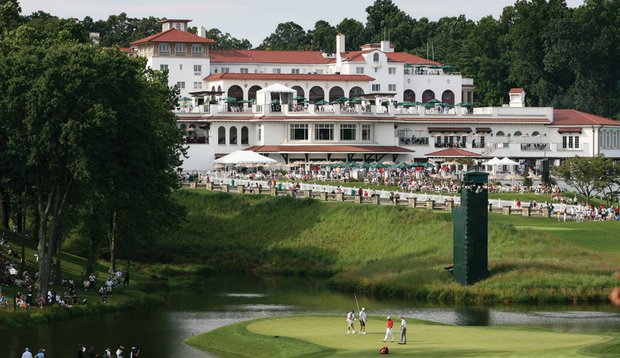First, there is the course itself, the practice facility and the club house. All courses will have some form of all three major areas. However, some clubs have very limited practice areas and club houses while others put literally tens of millions of dollars into the club house or practice areas.
Let's start with the golf course.
The golf course itself is made up of holes. Each hole contains a tee box and a green, at a minimum. Most courses have a series of 9, 18, 27 or 36 holes.
Each hole has a general rating for what a professional should score on it. That general rating is called, "Par." Par is 3, 4 or 5 (there are a few, very few courses that have a Par 2 or 6, but that is very rare). As a beginner, a good goal to start for is 3 strokes over Par on every hole (once you can hit the ball 100 yards)
Every hole has at least a tee box, a green and a hole.
The tee box is where the hole begins. All players start the hole by placing a tee in the ground (optional, but highly advised!) and placing the ball on it. The ball is struck successively until it comes to rest on the green. Once the green is reached, the ball is then putt into the hole. Once the ball has be holed, the player takes the ball onto the next tee box and the process is repeated.
Other areas on any given hole may include -
The Fairway - this is the short grass between the tee box and the green.
A Bunker/Sand Trap - imagine a small pit filled with sand that ranges in size from a refrigerator to football field (don't put your ball in that one! :) )
Out of Bounds - this is area is marked by white posts. Balls that enter this area are deemed to be out of play and the player must replay the shot from the original position where the ball last came to rest (don't do this either!)
Hazards - an area in which red or yellow posts signify that the ball can be played from (most of the time, some local rules do not permit it) but the club cannot touch the ground before executing the stroke. It is possible that the hazard could be a cliff edge, a lake, largely overgrown grass areas or river/ditch.
Rough - this traditionally surrounds the fairway. It varies in length (grass length that is) from one half inch to 5 inches.
And, while there are many other areas that exist, this is a basic introductory list and let's move onto the practice facility.
At the practice facility of the golf course, most will have the following:
Putting green - the area in which practicing putting is permitted
Chipping/Pitching area - the area in which practicing chipping/pitching is permitted
Driving range - the area in which practicing long shots is permitted
The general idea in these areas is to be curious to other golfers and practice your game. Click here to learn about practice.
The Clubhouse is where most of the action exists for purchases, dinning, locker-rooms, events and other activities the golf course holds. It is typically very easy to find because it tends to be the only major structure on the golf course. Some clubhouses are a half of a trailer. Some clubhouses are more than double that in square footage of the white house! (Congressional Country Club has a Clubhouse that is 140,000 SQ FT! Posted below)

This is the area in which you would be likely to find a food and beverage service operation, the golf shop, a club repair area, staff offices, bathrooms and other departments the club deems necessary.
Test your knowledge!
